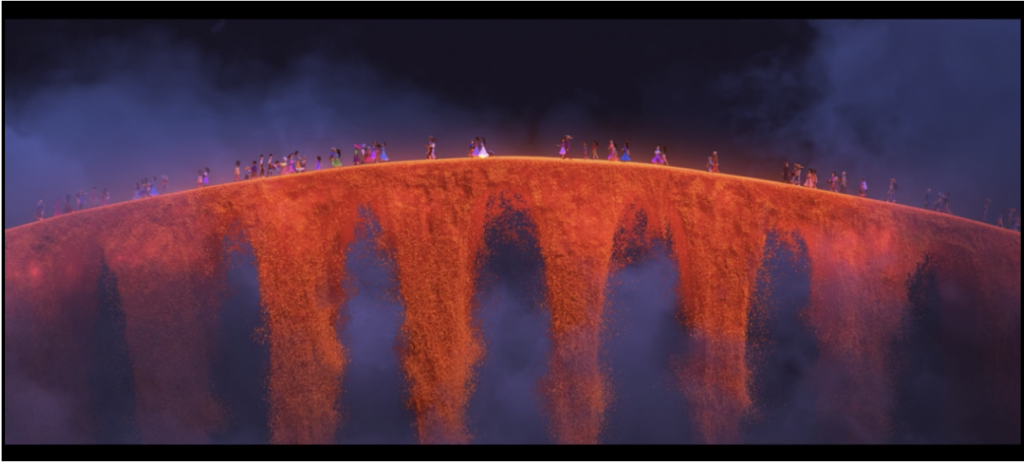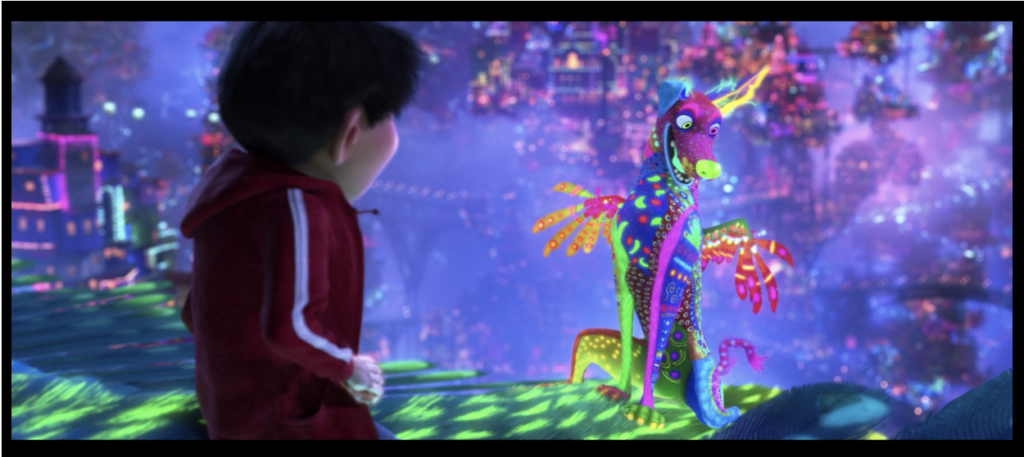Spoiler Alert: Article contains spoilers from Disney’s animated film Coco.
Originally celebrated by Mesoamericans to remember the deceased, Dia de los Muertos, or Day of the Dead, is a Mexican and Central American holiday that has been on the rise in the U.S. and is increasingly incorporated into post-Halloween festivities. The holiday has also grown in popularity since the release of Disney’s animated film Coco in 2017.
The film demonstrated the vibrancy and cultural significance of the festival and inspired many to begin observing the holiday in their homes around the world. Since the animated film was quite culturally accurate, you too can start celebrating Day of the Dead at home with Disney’s Coco. This vibrant and meaningful celebration is a great way to keep the festivities going at home after Halloween since Day of the Dead begins the night of October 31 and ends on November 2.
So how can you celebrate Day of the Dead at home with your family? You can sit back, relax and enjoy Disney’s Coco with your little ones, or try your hand at making Dia de los Muertos-themed treats that the whole family will enjoy. Treats like these Mickey-shaped Day of the Dead cookies made by DVC Shop’s own Rachel and Lincoln are a great way to start your Day of the Dead celebration.
However you decide to celebrate Day of the Dead this year, keep reading to learn more about how Disney’s Coco bridged the gap between this special holiday and the magical world of Disney.

The Ofrenda
Disney did an amazing job demonstrating various Day of the Dead themes in Coco. One of the central themes of Coco, and of Dia de los Muertos, is the ofrenda. The most recognized symbol of Dia de los Muertos, and literally meaning “offering,” the ofrenda is an altar created by the deceased’s loved ones to honor, remember, and celebrate their life, as well as provide them with whatever they might need in the afterlife.
Photos of the deceased are placed on the ofrenda, as well as items they may have treasured. Without the photos and possessions, the deceased is unable to cross back over to the living world to visit, as we saw from Hector’s experience in Coco.
Four Elements
The ofrenda is constructed of the four main elements: water, wind, earth, and fire. As we saw in Coco, loved ones often leave food, especially bread, and water on the altar, representing water and earth. Wind is shown in the papel picado, the traditional paper banners around the ofrenda, which Coco focused on in the beginning of the film as Miguel told his family’s story. Traditionally this delicate paper symbolizes the fragility of life, and its holes allow the deceased’s soul to come through and visit.
The ofrenda is also covered in candles, symbolizing fire, to help guide the spirits on their journey. We also saw the calaveritas de azucar, the sugar skulls, decorating the Riveras’ altar. These are brightly decorated to celebrate life and its cycle, rather than as a symbol of death.

Marigolds
Marigolds also play a part of Dia de los Muertos, specifically the cempasuchil, a type of marigold native to Mexico. In Coco, the marigold flower and its petals were a centralizing theme, not only decorating the ofrenda, but also making up the bridge between the living world and afterlife, and swirling up in times of deep emotion, especially when tied to family.
The marigold petal was also the key to allowing Miguel to return to the land of the living, to prevent him from being forced to stay in the afterlife forever. The cempasuchil plays such an important part of Day of the Dead because their strong scent and vibrant color are believed to attract souls to the ofrenda, to make a path from the spirits to their family’s homes in the living world.

Alebrijes
Alebrijes have a role in Day of the Dead, as well. In real life, these are vibrantly-colored handmade animal figurines, usually of fantastical creatures. Usually hand-carved or crafted from paper-mache, they are believed to be spirit animals.
In Coco, the alebrije plays a special role in Dante, Miguel’s dog, who is a Xoloitzcuintli, a Mexican hairless dog breed. Highly valued, this type of dog is believed to be a spiritual protector, and in Aztec mythology, were able to travel between the lands of the living and the dead. This holds true in Coco, as well, as Dante transforms into his alebrije self in the land of the dead but reverts back to a normal dog back in the land of the living.
Coco is a beautiful celebration of Dia de los Muertos, incorporating so many themes from the holiday as well as Central American legend and mythology. Disney’s Pixar was able to not only put a modern twist on the mythology and fun portrayal of the festival, but also used it to educate viewers on the Mexican holiday and inspire others to take up its practice.
While the festival had not been as widely celebrated by young, urban people as by those in small southwestern Mexican towns, the festival has begun rising in numbers in recent years. Coco not only made a mark on the film industry by becoming the 20th most watched animated film of all time, but has excited more people around the world to celebrate the Day of the Dead.

